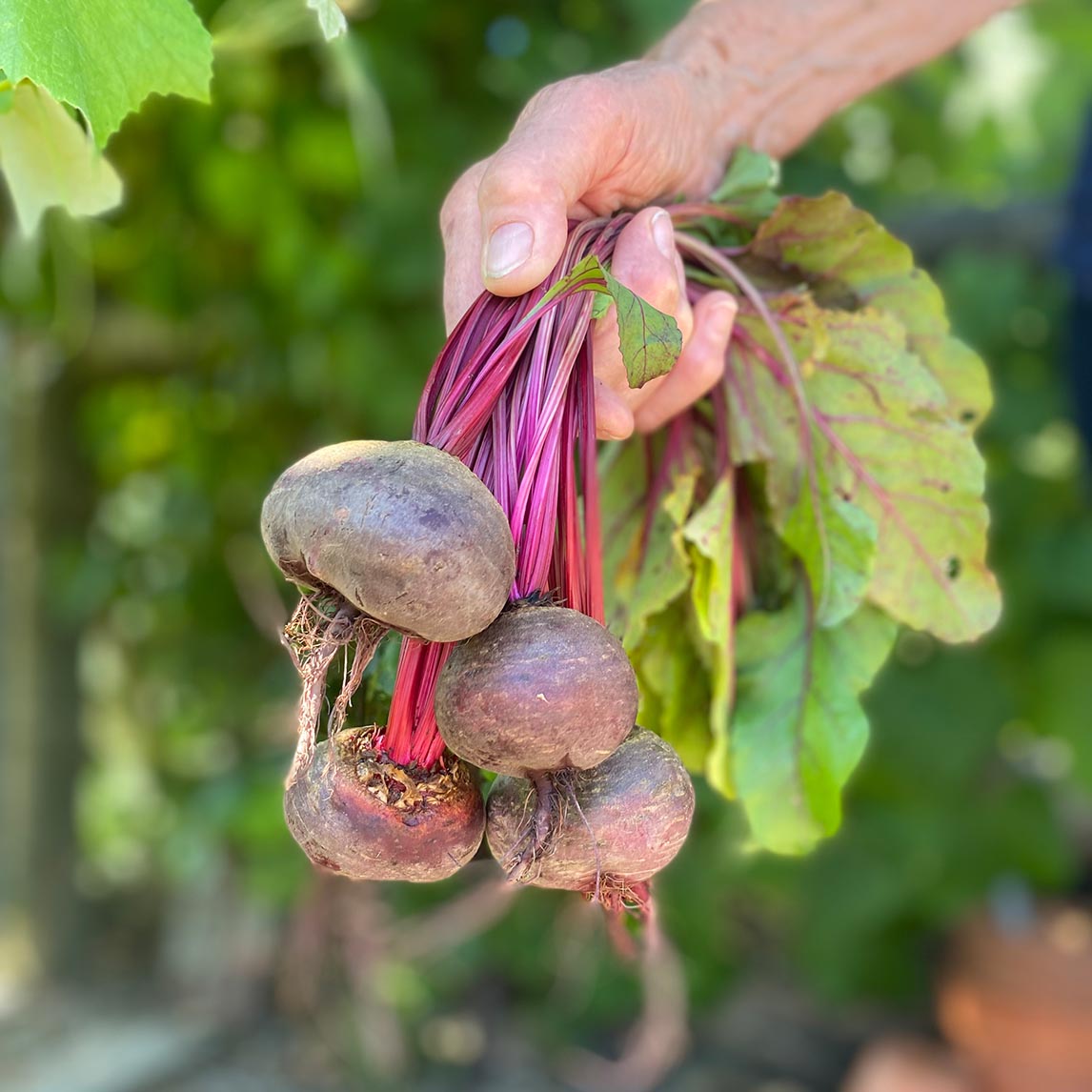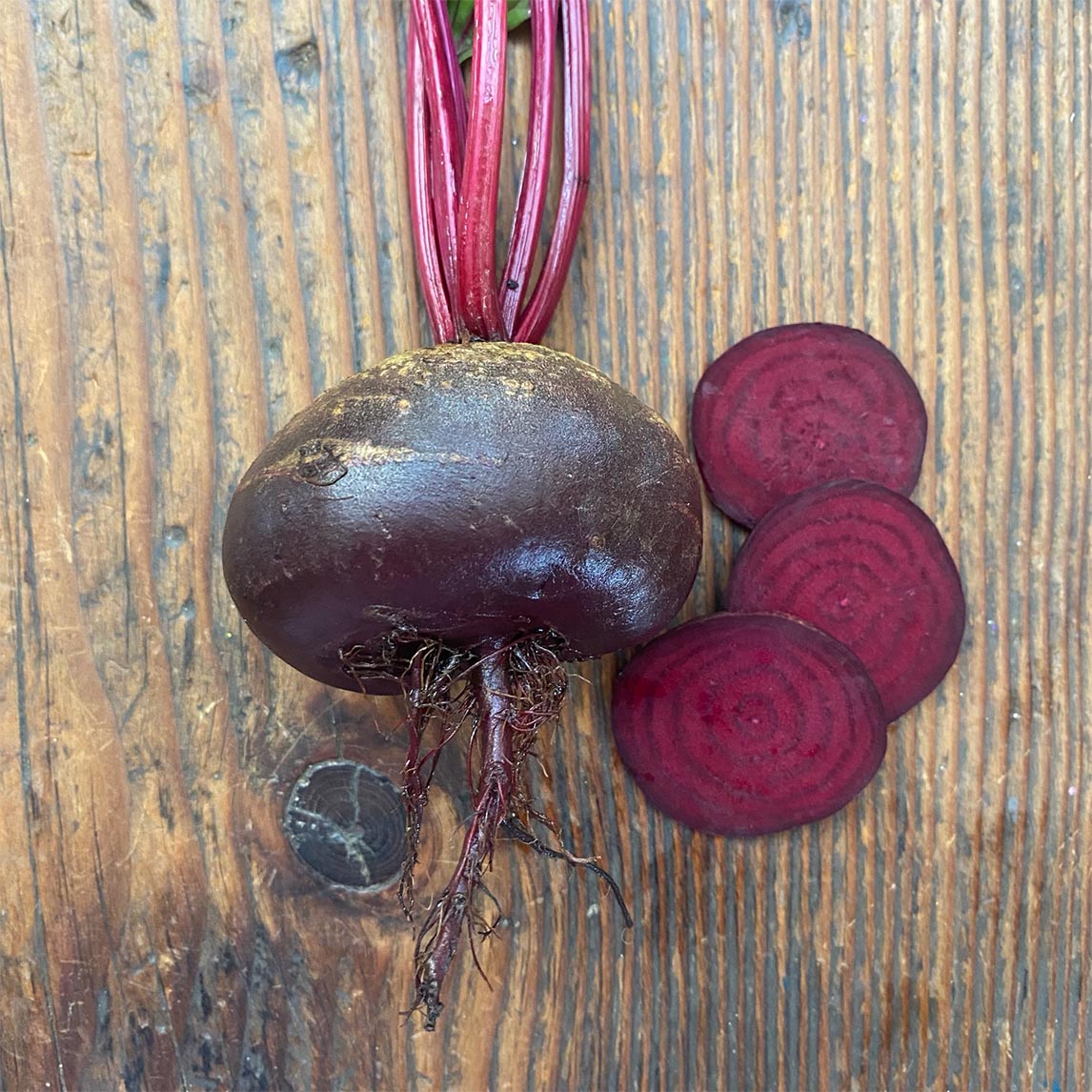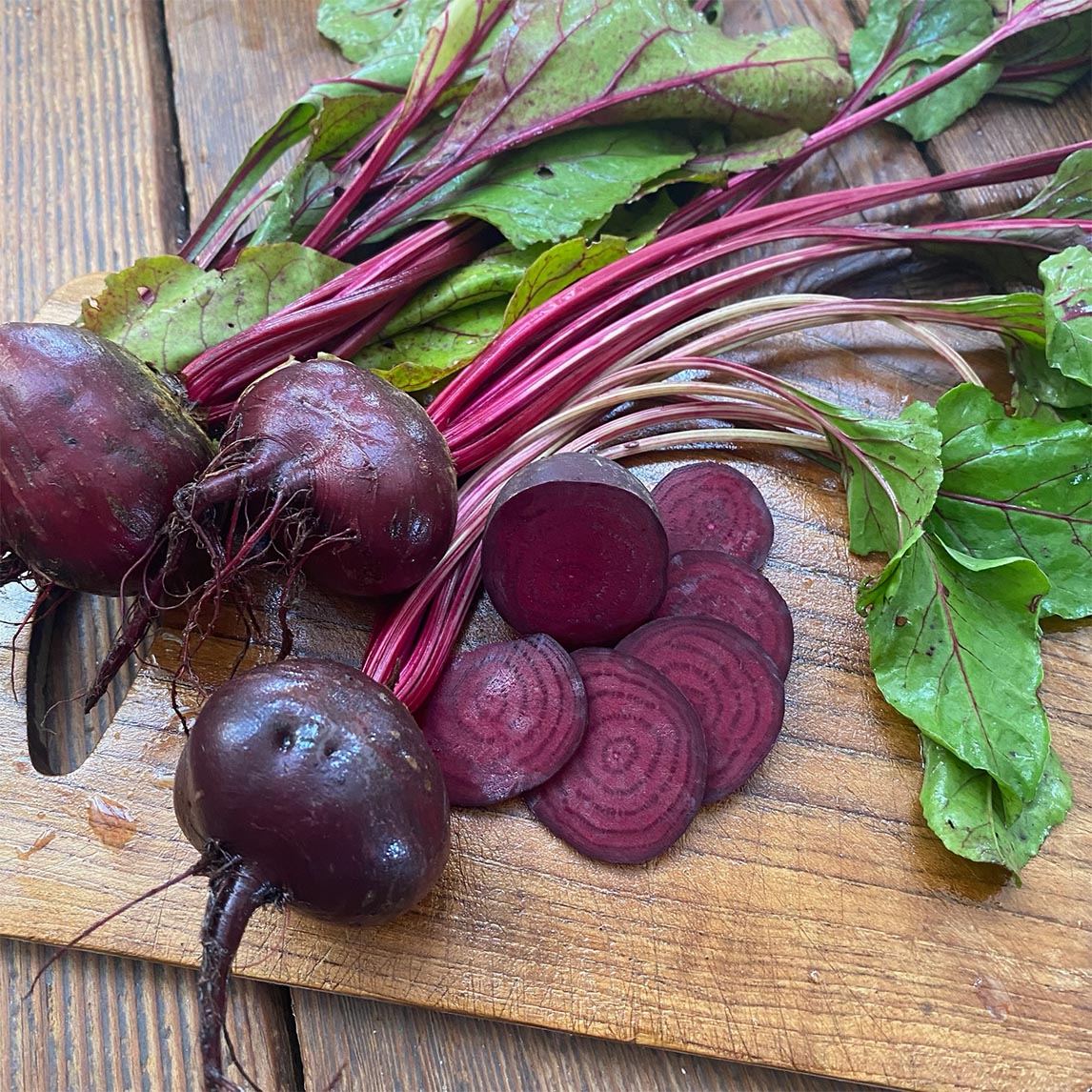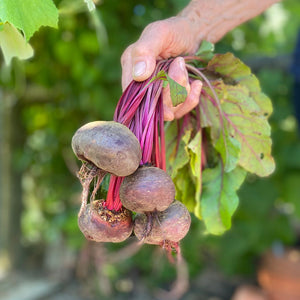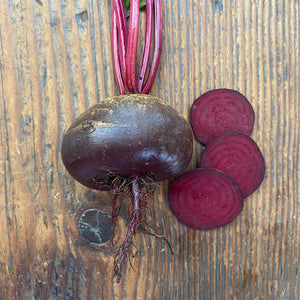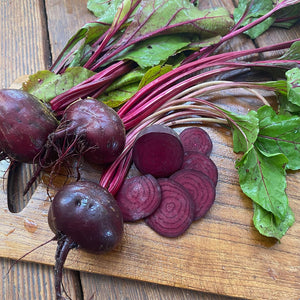Beetroot 'Crosby's Egyptian'
Beetroot is a fast growing crop suitable for sowing and growing year round in most climates. Best grown quickly to keep roots palatable, harvest leaves throughout the growing season to add to salads for a splash of colour, but don't pick too many as your beetroot crop needs them to grow. Soak seed overnight before sowing. Sow direct into a well prepared soil. Each seed contains 3 plants, so thinning will be required as plants germinate and grow, to ensure adequate root growth. Young seedlings can be added to salads or transplanted. Sow every 3-4 weeks to extend your harvest. Water regularly, especially during germination. Beetroot prefers a rich soil, with plenty of well rotted compost dug in. Drainage is important, as is a pH of 6.5-7, so add some lime or dolomite if needed. Beetroot of irregular colour, or woody, tough roots can be the result of irregular watering or a very high pH.

